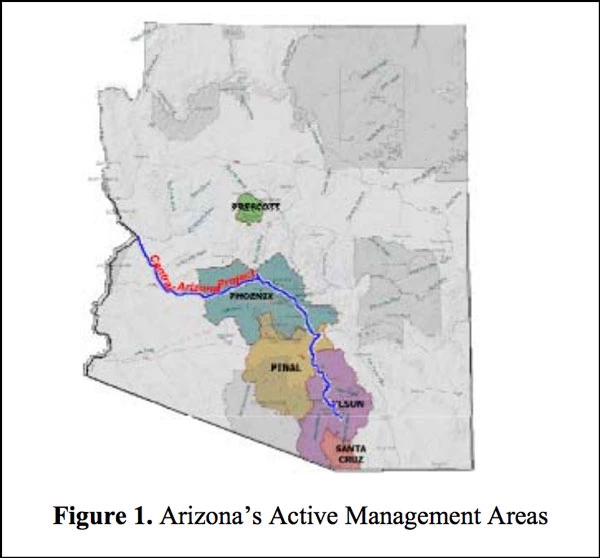
Arizona’s Groundwater Savings Program (GSP) is a cornerstone of the state’s overall Groundwater Storage and Recovery Program. Borne out of Arizona’s efforts to use its Central Arizona Project (CAP) allocation fully, the GSP serves as a low-cost means of utilizing renewable, surface water supplies.
Early CAP Water Use: Not According to Plan The CAP is a 336-mile canal that delivers about 1.5 million acre-feet of water annually from the Colorado River to Maricopa, Pima, and Pinal Counties in central Arizona. (An acre-foot of water, or 325,851 gallons, is the amount of water needed to cover an acre of land with one foot of water.) Built by the U.S. Bureau of Reclamation, the CAP lifts water from near sea level to about 2,800 feet at its highest point in Pima County. As part of the federal-state partnership to construct the CAP, the federal government required that Arizona regulate groundwater use and Arizona enacted the Groundwater Management Act of 1980 to control groundwater overdraft in central Arizona. The Act included designation of Active Management Areas (AMAs), where the Arizona Department of Water Resources would enforce groundwater management regulations. Today, the AMAs include five distinct hydrologic regions: Prescott, Phoenix, Pinal, Tucson, and Santa Cruz (Figure 1). The CAP services Maricopa, Pima and Pinal Counties.

